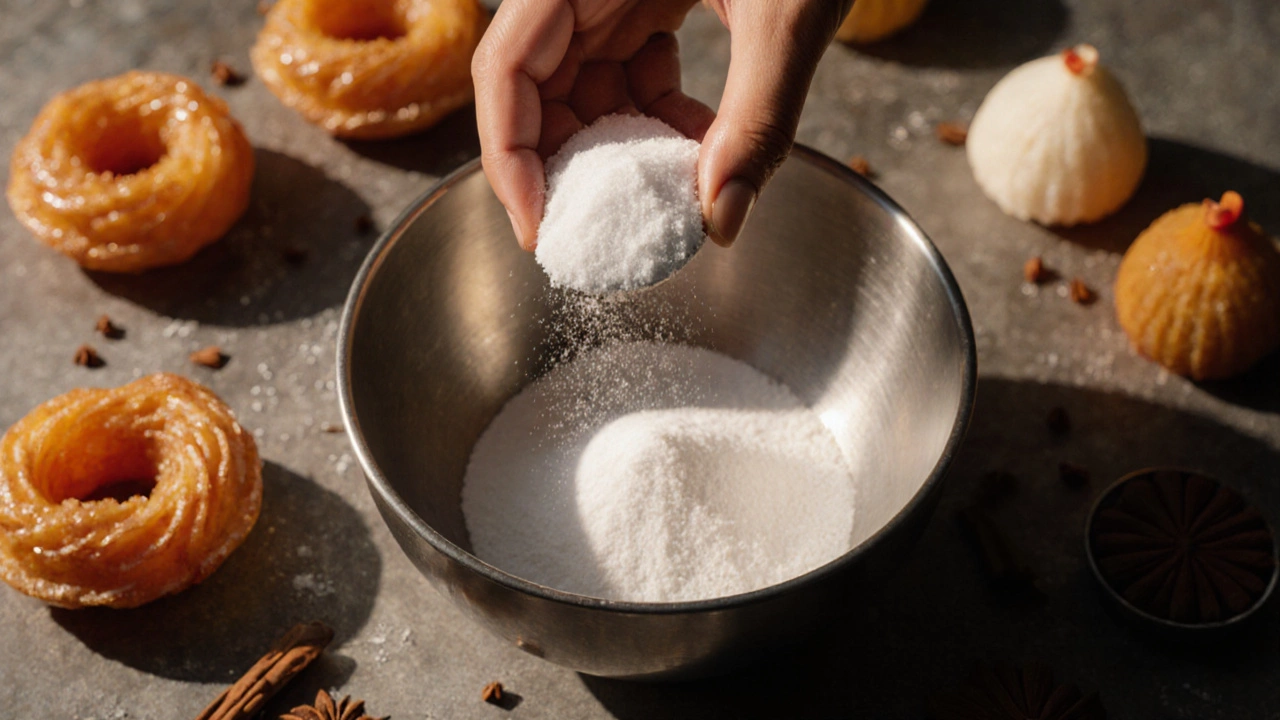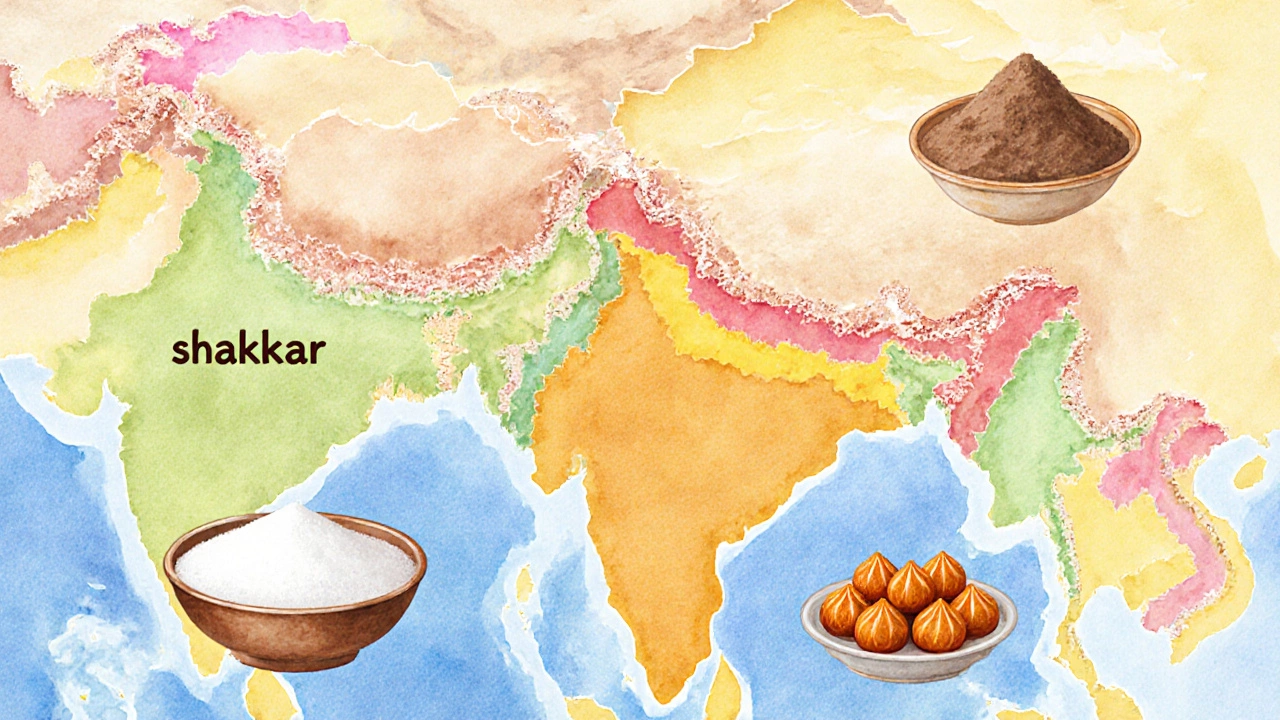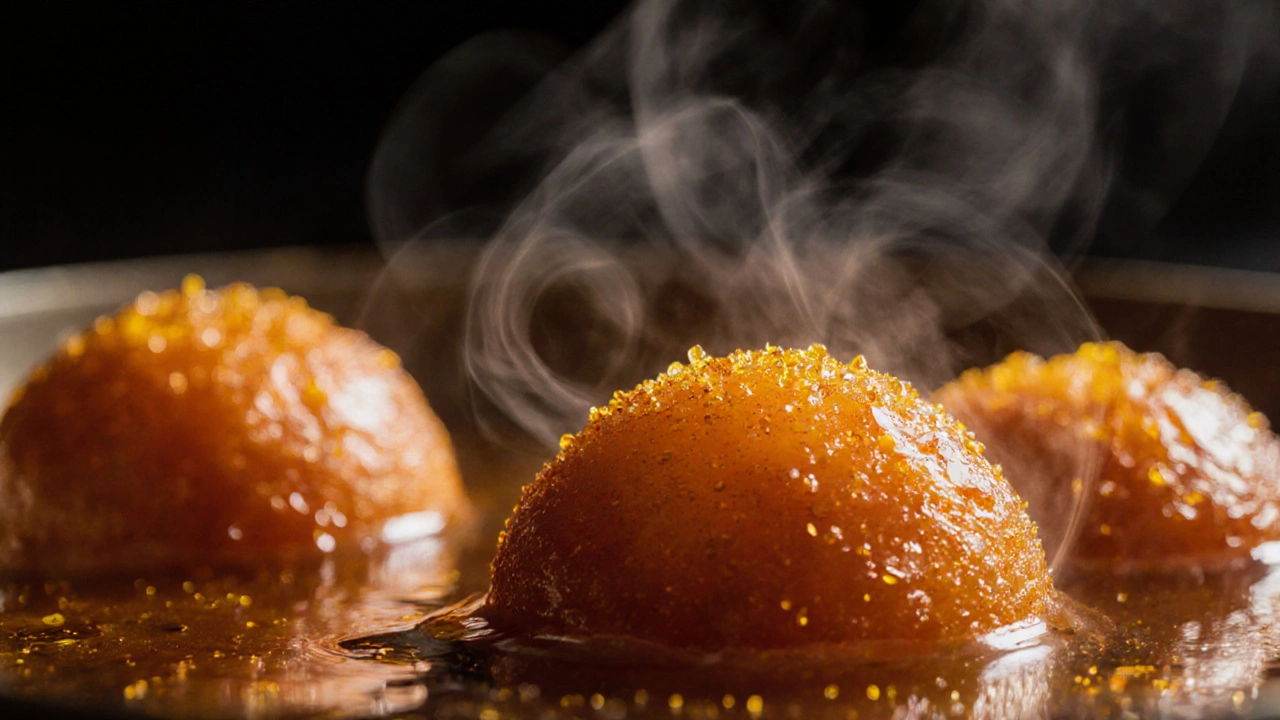What’s the Indian Word for Sugar? Hindi, Regional Terms & Sweet Recipes
 Oct, 14 2025
Oct, 14 2025
When you glance at an Indian sweet recipe and see Sugar described as shakkar or cheeni, you might wonder which word actually means “sugar.” This guide clears up the confusion, shows you the most common Indian words for sugar across languages, and explains how those terms shape the taste of classic desserts.
Quick Takeaways
- Shakkar is the Hindi‑Urdu word for refined white sugar.
- Cheeni comes from Persian and is used in many North‑Indian recipes.
- South‑Indian languages prefer pani‑sugar terms like "sakkarai" (Tamil) or "sakkara" (Telugu).
- For jagged or unrefined sugar, look for gur (jaggery) or misri (rock candy).
- Knowing the regional term helps you follow recipes accurately and avoid sweet‑flavor surprises.
Core Hindi‑Urdu Terms: Shakkar vs. Cheeni
In everyday conversation, most people from Delhi, Mumbai, and Lucknow will call refined white sugar Shakkar. The word entered Hindi from Persian during the Mughal era, where "shakar" simply meant sugar. When you read a recipe that says “1 cup shakkar,” you can safely substitute it with any white granulated sugar you buy at the store.
Cheeni is another popular term, especially in Punjabi and some Bengali households. Originating from the Persian "chini," it originally referred to Chinese sugar, reflecting historic trade routes. While the two words are interchangeable for most home cooks, you’ll notice cheeni appears more often in sweet‑making instructions that call for a fine, quick‑dissolving sugar, such as in syrups for jalebi or rasgulla.
Regional Vocabulary Across India
India’s linguistic diversity means each state has its own word for sugar. Below is a quick reference that covers the most spoken languages.
| Language | Word for Refined Sugar | Notes / Typical Uses |
|---|---|---|
| Hindi / Urdu | Shakkar | General cooking, desserts, tea. |
| Punjabi | Cheeni | Often used in syrup‑based sweets. |
| Bengali | চিনি (Chini) | Common in mishti doi, roshogolla. |
| Marathi | साखर (Sakhar) | Used for puran poli and shrikhand. |
| Gujarati | શક્કર (Shakkar) | Same as Hindi, appears in dhokla sugar glaze. |
| Tamil | சக்கரை (Sakkarai) | Often paired with jaggery; used in payasam. |
| Telugu | చక్కెర (Chakkera) | Common in palkova and halwa. |
| Malayalam | പഞ്ചസാര (Panjasara) | Used in coastal sweets like unniyappam. |
| Kannada | ಸಕ್ಕರೆ (Sakkare) | Found in ragi laddu and halasina haalu. |
Other Sweeteners: Gur, Misri, and Petha
While “sugar” usually points to refined white crystals, Indian cooking also relies heavily on Gur (jaggery), Misri (rock candy), and Petha (crystallized sugar candy). These ingredients have distinct textures and flavors, so they appear in different recipes:
- Gur is unrefined cane sugar, dark brown, and adds a caramel note to puran poli or kheer.
- Misri is formed by cooling molten sugar into small granules; it’s the classic garnish for paan and sweet syrups.
- Petha is a translucent sugar candy from North India, often served with fruit chaat.

How the Terms Influence Recipe Execution
When a recipe calls for shakkar but lists the quantity in “grams,” you can use any granulated white sugar measured by weight. However, if the instruction says “dissolve cheeni in water,” the writer expects a fine powder that melts quickly-using coarse jaggery would slow the process and change the color.
For syrup‑based sweets like jalebi or gulab jamun, the choice between shakkar and cheeni can affect texture. Cheeni’s smaller crystals create a smoother syrup, reducing graininess in the final product. In contrast, shakkar works well for caramelizing layers, as seen in kaju katli where a slight caramel flavor is desirable.
Substituting Sugar in Indian Desserts
If you can’t find the exact term‑based sugar, follow these practical guidelines:
- Use white granulated sugar for any instance of shakkar or cheeni. The ratio is 1:1 by weight.
- Swap Gur for white sugar at a 1:1 ratio, but expect a deeper flavor and darker color.
- Replace Misri with powdered sugar blended with a touch of corn syrup to mimic its quick‑melting property.
- When a recipe specifies “rock candy” for garnish, you can use coarse sugar crystals or freeze‑dried sugar balls as a visual substitute.
Common Misconceptions About Indian Sugar Words
Many home cooks assume that “shakkar” is a fancy term for jaggery. In reality, jaggery is Gur, while shakkar is refined, white, and chemically similar to the sugar you buy overseas. Likewise, “cheeni” isn’t a different type of sugar-it’s just a regional synonym. Understanding these nuances prevents you from over‑sweetening or under‑sweetening a dish.

Putting It All Together: Sample Recipe with Terminology Explained
Let’s walk through a classic Gulab Jamun recipe and spot where each sugar term matters.
- Mix 200g khoya (reduced milk) with 30g cheeni to create a smooth dough. The fine cheeni dissolves quickly, keeping the dough pliable.
- Shape into small balls and deep‑fry.
- Prepare syrup: dissolve 250g shakkar in 200ml water, add a pinch of cardamom and a few strands of saffron. Shakkar’s larger crystals give the syrup a glossy finish after it thickens.
- Soak the fried balls in the warm syrup for 2‑3hours. The sugar type ensures the balls absorb the syrup evenly without turning grainy.
Notice how each term aligns with the cooking step-cheeni for a smooth dough, shakkar for a glossy syrup.
Tips for Reading Indian Sweet Recipes
- Look for the language cue: Hindi recipes lean on shakkar, Punjabi on cheeni, and South‑Indian texts on local words like sakkarai or pani‑sugar.
- When a recipe mentions “rock candy” (misri), expect a quick‑dissolving sweetener for syrups.
- If the ingredient list includes “gud” or “gur,” be ready for a denser, caramel‑flavored sweet.
- Measure sugar by weight whenever possible; the grain size differs across terms but the sweetness stays the same.
Frequently Asked Questions
What is the difference between shakkar and cheeni?
Both refer to refined white sugar, but shakkar is the Hindi‑Urdu term while cheeni is more common in Punjabi and Bengali households. The taste and crystal size are essentially the same; the choice is regional.
Can I use jaggery instead of shakkar in sweets?
Yes, but expect a deeper, caramel flavor and a darker color. Jaggery works well in recipes that benefit from its molasses notes, such as kheer or certain types of halwa.
What is misri and when should I use it?
Misri is rock candy-large, clear sugar crystals that melt instantly. It’s perfect for sweetening hot beverages, garnishing paan, or making quick syrups where grainy sugar would be noticeable.
How do I read a Bengali recipe that uses the word "chini"?
In Bengali, "chini" simply means refined white sugar, identical to shakkar. Use any granulated sugar you have on hand; the term is just a language variation.
Is there a health difference between shakkar and gur?
Gur (jaggery) retains some mineral content from the cane, so it’s considered slightly more nutritious. However, both are high in calories, so moderation is key.